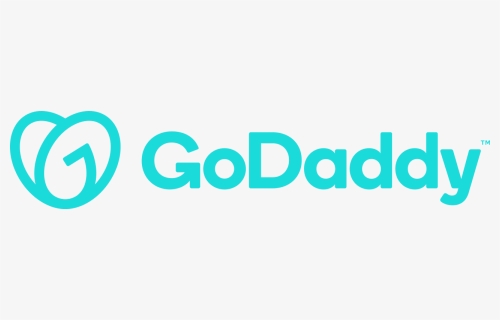May 11, 2023
Dive into the world of e-commerce with this comprehensive guide on how to start an online store using GoDaddy. We will take you through the entire process, from ideation and planning to launching and promoting your online store.
- Define your target customers:
- Identify key demographics such as age, gender, marital status, education level, household income, and geographic location.
- Gather customer psychographics, including lifestyles, goals, interests, and hobbies.
- Understand consumer buying behaviors and key influences.
- Research and choose products:
- Ask family and friends for feedback on your product idea.
- Gather insights on what features would be appealing to potential customers.
- Consider conducting online surveys or using tools like SurveyMonkey or Google Docs.
- Determine where you will source your products, such as selling existing inventory, dropshipping, creating unique products, or offering a monthly subscription service.
- Choose a business type:
- Decide on the legal entity for your business, considering factors like personal asset protection, tax benefits, and ease of securing loans.
- Options include sole proprietorship, partnership, and limited liability corporation (LLC).
- Build your online store:
- Purchase a domain and business name that are short, memorable, and marketable.
- Invest in a hosting and design template platform, which often includes website templates, product pages, shopping cart, payment processing, and hosting.
- Budget for additional creative costs or consider doing it yourself.
- Develop your pricing profile, including all costs involved in running your online store.
- Create categories for your products and make them easy to find with an intuitive navigation system.
- Craft compelling product descriptions and upload high-quality product photos.
- Select and feature your best products on your homepage and other relevant pages.
- Decide where to place featured products strategically on your site for maximum visibility and sales.
- Define your refund and return policy, as well as privacy policy and terms of service.
- Establish a security policy to protect customer payment information.
- Connect a payment provider:
- Choose a payment provider that integrates with GoDaddy and offers secure payment processing.
- Ensure your website has SSL encryption and explain its necessity to customers.
- Display your security measures and third-party verification to build customer trust.
By following these steps, you’ll be on your way to launching a successful online store with GoDaddy.

History The original GoDaddy logo until 2019
GoDaddy was established in 1997 in Phoenix, Arizona, by entrepreneur Bob Parsons. Prior to starting GoDaddy, Parsons had sold his financial software services company, Parsons Technology, to Intuit for $65 million in 1994. After a brief retirement, he returned in 1997 to launch Jomax Technologies, later known as GoDaddy Group Inc. In 2011, GoDaddy received a strategic investment from private equity funds, including KKR, Silver Lake, and Technology Crossover Ventures.
Initially headquartered in Scottsdale, Arizona, GoDaddy relocated its company headquarters to Tempe, Arizona in April 2021.
Company Name
In 1999, while brainstorming, a group of Jomax Technologies employees decided to change the company name. One employee suggested “Big Daddy,” but the domain name was already taken. Bob Parsons then proposed “Go Daddy,” which was available, and he purchased it. Parsons stated that they kept the name because it brought a smile to people’s faces and was memorable. In February 2006, the company transitioned from “Jomax Technologies” to “GoDaddy” as its new brand name.
The original GoDaddy logo featured a cartoon-like character with disheveled hair wearing sunglasses. In January 2020, GoDaddy introduced a new logo featuring a simple, sans-serif typeface accompanied by a heart-shaped design spelling out “GO.”
Company Growth
In 2001, shortly after Network Solutions lost its monopoly on domain registration, GoDaddy was on par in size with competitors Dotster and eNom.
By April 2005, GoDaddy had become the largest ICANN-accredited registrar on the Internet.
As of 2018, GoDaddy holds the largest market share in web hosting worldwide and has over 62 million registered domains.
In March 2018, Amazon Web Services (AWS) announced that GoDaddy would be transitioning the majority of its infrastructure to AWS over several years.
Acquisitions and Mergers
For a comprehensive list, refer to the List of mergers and acquisitions by GoDaddy.
Infrastructure
In 2013, GoDaddy was recognized as the world’s largest ICANN-accredited registrar, four times larger than its closest competitor. They operate a 270,000-square-foot (25,000 m2) facility in Phoenix, Arizona.
According to PeeringDB, GoDaddy maintains two autonomous systems that enable global access to their services. Their main autonomous system, AS-26496, can be reached from six cities and nine public and private peering facilities.
Controversies
For a detailed list, see the List of controversies involving GoDaddy.
Suspension of Seclists.org and Purchase of No Daddy
On January 24, 2007, GoDaddy deactivated the domain of computer security site Seclists.org, resulting in the removal of 250,000 pages of security content. This action was taken following a complaint from MySpace regarding the publication of 56,000 user names and passwords on the Seclists.org site and other websites. The suspension led to the creation of NoDaddy.com by Seclists.org administrator Gordon Lyon as a platform for dissatisfied GoDaddy customers and whistleblowers.
China Domains
In March 2010, GoDaddy ceased registering .cn domains (China) due to the extensive personal information required for registration. Some viewed this decision as a response to Google’s actions in China. GoDaddy’s general counsel, Christine Jones, stated that they did not want to become an agent of the Chinese government by complying with their data requests. However, GoDaddy resumed registering .cn domain names in February 2016 as part of its expansion into the Asian market.


